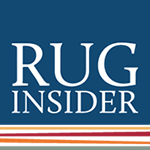Proper Care and Cleaning
“A good quality wool rug or carpet will provide years of service with proper care and cleaning” is in one way or another a sentence that has been spoken by countless salesmen when describing the durability of said rugs.
 Rug Insider Magazine
News for the Rug and Carpet Professional
Rug Insider Magazine
News for the Rug and Carpet Professional “A good quality wool rug or carpet will provide years of service with proper care and cleaning” is in one way or another a sentence that has been spoken by countless salesmen when describing the durability of said rugs.
When award-winning designer Emma Gardner first introduced her ‘Spray’ design during ICFF in 2003 it became an instant classic. As the design now reaches its teenage years, Rug Insider looks at its history and evolution.
In late August 2017 a calamitous hurricane caused massive flooding and destruction in Houston, Texas. As the city and region continues to rebuild, rug insider Lisa Slappey of Pride of Persia Rug Company & Postmodern Traditions provides a narrative on the fate of deluged rugs and carpets and the state of rug sales.
Inspired by a trove of darning samplers at the Museum of International Folk Art in Santa Fe, New Mexico, Kyle Clarkson from Jan Kath has designed a visually intriguing new collection.
The mere utterance of its name alone is enough to elicit controversy. On one hand there are those who love to hate upon it, on the other are those who embrace its use. Viscose, in its various forms, is increasingly used in rugs and carpets of multiple qualities. RUG INSIDER presents a daring look at both sides discussing its relative performance characteristics, situations unsuited for viscose, some key legal notes, and finally what makes a viscose carpet great.
Designed by Garth Roberts, cc-tapis’ After Party carpet recently won a coveted German Design Award. The design— inspired in part by post fete confetti on the floor—reminds of the Memphis Design Movement of the 1980s, terrazzo flooring, vinyl composite tile (VCT), and one might argue, an updated and revisited Desert from Odegard Carpets.
Rug Insider takes you behind the scenes to examine the making of a Nepali-Tibetan carpet as Josephine Ford talks about her process and her collaboration with London’s FLOOR_STORY. Follow along as we offer a peek behind the romance, into the toughness—the strength—of Nepali-Tibetan weaving.
When RUG INSIDER first started publication in 1996 the rug market was nearing the end run of a great class of traditionally styled rugs that replicated the look of those familiar Persian designs of Kashan, Isfahan, Kerman, and especially Tabriz to name but a few. Handmade in the Peoples Republic of China the so-called Sino-Persian rugs rose to prominence in the late 1980s as an alternative to their Persian cousins, which were banned by a United States embargo from 1987 to 2000.